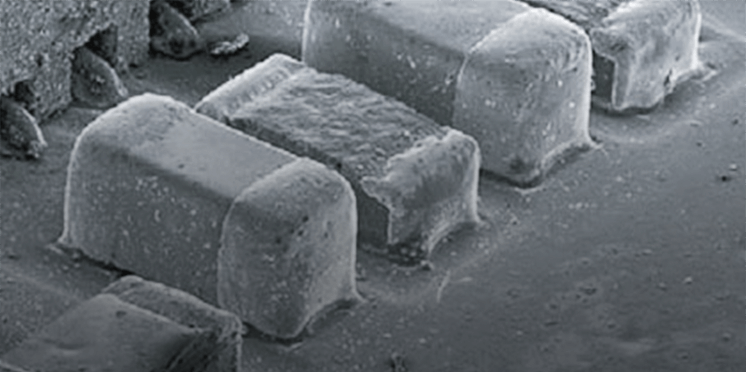免疫電顕法
免疫電顕法
immunoelectron microscopy
[目次:試料等(試料および試料作製)]
抗体が抗原となるタンパク質に特異的に結合する抗原抗体反応を利用して、特定のタンパク質の存在部位(局在)を透過電子顕微鏡で可視化する方法。最初に標的タンパク質に対する抗体(一次抗体)を反応させる。続いて、金コロイドなどで標識された二次抗体を一次抗体に反応させて、透過電子顕微鏡で標的タンパク質を検出できるようにする。抗体を反応させるタイミングにより、プレエンベディング法(樹脂包埋前)とポストエンベディング法(樹脂包埋後)とがある。
Immunoelectron microscopy is a technique to visualize the locations (localization) of specific proteins with a TEM, by utilizing antigen-antibody reactions where antibodies bind specifically to antigenic proteins. First, antibodies (primary antibodies) react with the target proteins. Then, the secondary antibodies labeled with gold colloid, etc., react with the primary antibodies, so that the target proteins can be detected with the TEM. Immunoelectron microscopy is classified into two methods depending on the timing of antibody reactions; pre-embedding (before resin embedding) and post-embedding (after resin embedding).
関連用語から探す
説明に「免疫電顕法」が含まれている用語






